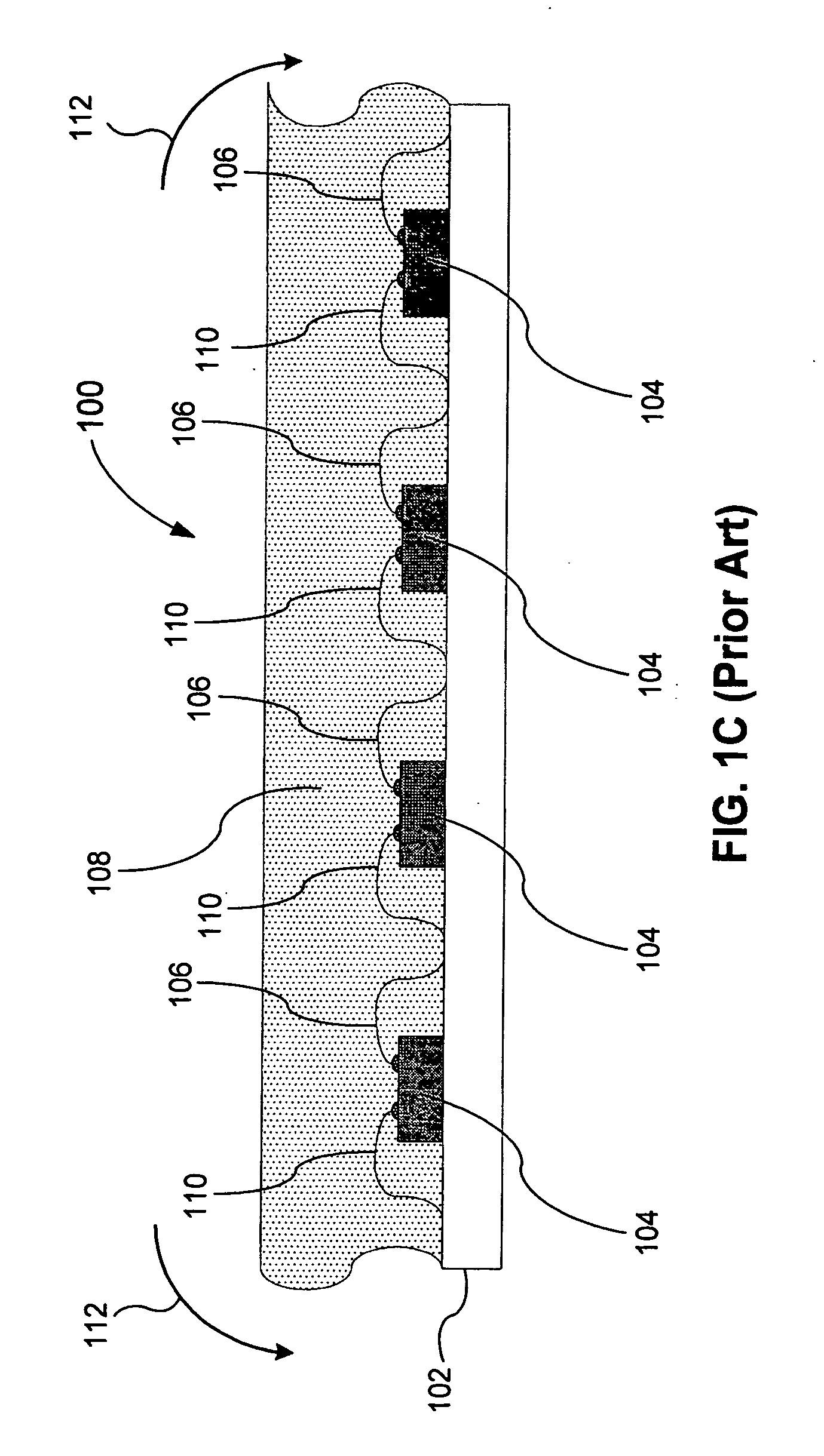Flexible circuits having improved reliability and thermal dissipation
a flexible circuit and reliability technology, applied in the direction of circuit thermal arrangement, printed circuit aspects, electrical equipment, etc., can solve the problems of increasing the possibility of cracks, both flexible and rigid circuits are present with respect, and the use of these devices was limited mainly, so as to improve their thermal dissipation properties, the effect of improving the reliability of flexible circuits
- Summary
- Abstract
- Description
- Claims
- Application Information
AI Technical Summary
Benefits of technology
Problems solved by technology
Method used
Image
Examples
Embodiment Construction
[0035]In the following description of examples of implementations, reference is made to the accompanying drawings that form a part hereof, and which show, by way of illustration, specific implementations of the invention that may be utilized. Other implementations may be utilized and structural changes may be made without departing from the scope of the present invention.
[0036]In general, a system and a method of improving the thermal dissipation properties of flexible circuits by adding and repositioning vias utilized for thermal dissipation and the reliability of these devices by adding multiple electrical vias and by re-aligning the wire bonding in these devices is disclosed. Turning to FIG. 4A, a cross-sectional side view illustrating an example of an implementation of a flex-LED 400 in accordance with the invention is shown. The flex-LED 400 may include a substrate 402 that may include a flexible dielectric and electrical conductors. Attached to the substrate 402 is a plurality...
PUM
 Login to View More
Login to View More Abstract
Description
Claims
Application Information
 Login to View More
Login to View More - R&D
- Intellectual Property
- Life Sciences
- Materials
- Tech Scout
- Unparalleled Data Quality
- Higher Quality Content
- 60% Fewer Hallucinations
Browse by: Latest US Patents, China's latest patents, Technical Efficacy Thesaurus, Application Domain, Technology Topic, Popular Technical Reports.
© 2025 PatSnap. All rights reserved.Legal|Privacy policy|Modern Slavery Act Transparency Statement|Sitemap|About US| Contact US: help@patsnap.com



